Savor the Flavors of Bangkok's Chinatown
Join us on a free walking tour through the heart of Chinatown, where delectable street food awaits at every corner, blending culture and cuisine in a vibrant experience.
Time
4 Hours
Stops
9 Places
Distance
2.7 km
Wat Traimit Withayaram Worawihan (Temple of the Golden Buddha)
Start your tour at this iconic temple, home to the world's largest solid gold Buddha statue, symbolizing the rich cultural heritage of Bangkok.
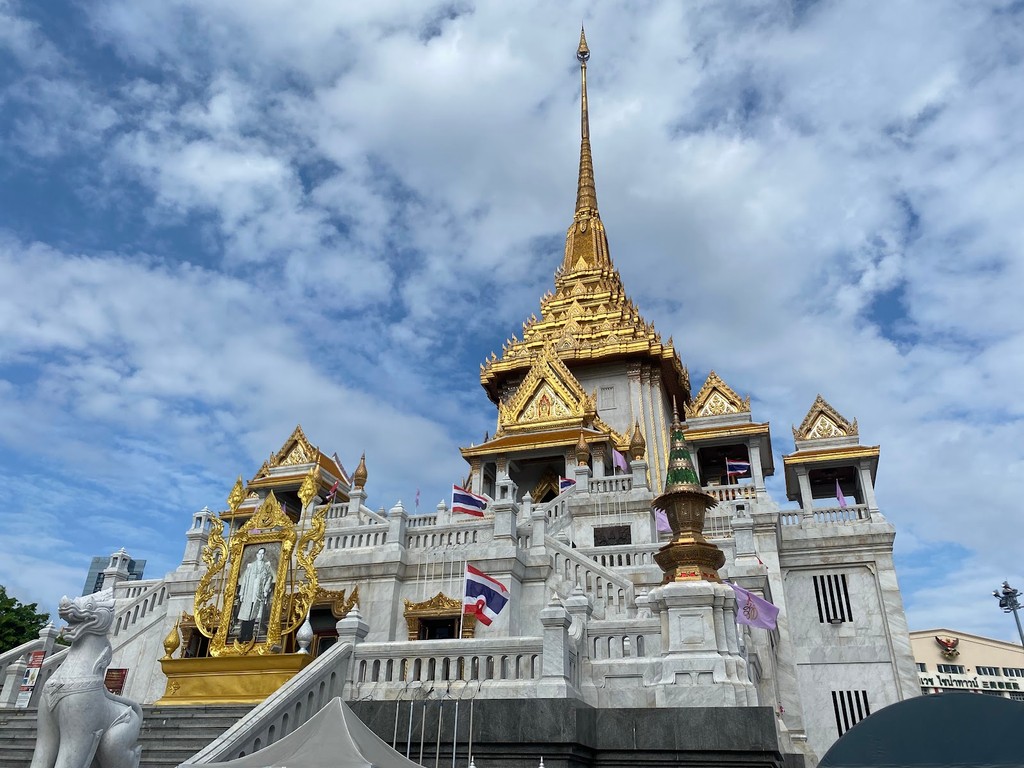
Wat Traimit Withayaram Worawihan (Temple of the Golden Buddha) (Source: Google Maps)
Wat Traimit, or the Temple of the Golden Buddha, is renowned for housing the world's largest solid gold Buddha statue, weighing an impressive 5.5 tons. This statue, originally covered in plaster, was discovered accidentally in the 1950s when the plaster was damaged during a move. The temple itself is a stunning example of Thai architecture, with intricate details and a majestic golden facade that reflects the sun beautifully. It serves as a significant cultural landmark, attracting visitors from around the globe who come to admire its beauty and learn about its history. The temple not only represents the spiritual beliefs of the Thai people but also symbolizes the rich cultural heritage of Bangkok and the importance of Buddhism in Thai society.
Odeon Circle
Just a short walk from Wat Traimit, this is the gateway to Chinatown, marked by the impressive Chinese gate, and serves as a great photo opportunity.

Odeon Circle (Source: Google Maps)
Odeon Circle marks the entrance to Chinatown and is characterized by its striking Chinese gate, known as the 'Paifang'. This landmark is a popular photo spot and a symbol of the vibrant Chinese community in Bangkok. The circle serves as a bustling hub where locals and tourists alike gather to admire the architecture and the lively atmosphere. The area is steeped in history, reflecting the cultural significance of Chinese immigrants who settled in Thailand and contributed to its diverse heritage. The circle is surrounded by various shops and eateries, making it an ideal starting point for exploring the culinary delights of Chinatown. Its design and vibrant colors embody the spirit of the community, welcoming visitors to experience the rich traditions and flavors of the area.
T & K Seafood
A popular street-side restaurant known for its fresh seafood offerings, such as grilled prawns and crab fried rice, perfect for a midday feast.

T & K Seafood (Source: Google Maps)
Nai Ek Roll Noodle
Famous for its peppery noodle soup with crispy pork, this establishment is a must-visit for those looking to savor authentic Thai-Chinese flavors.

Nai Ek Roll Noodle (Source: Google Maps)
Yaowarat Road Street Food
Dive into the bustling street food scene on Yaowarat Road, where you can try iconic dishes like Guay Jub (noodle soup) and Hoy Tod (oyster omelette).
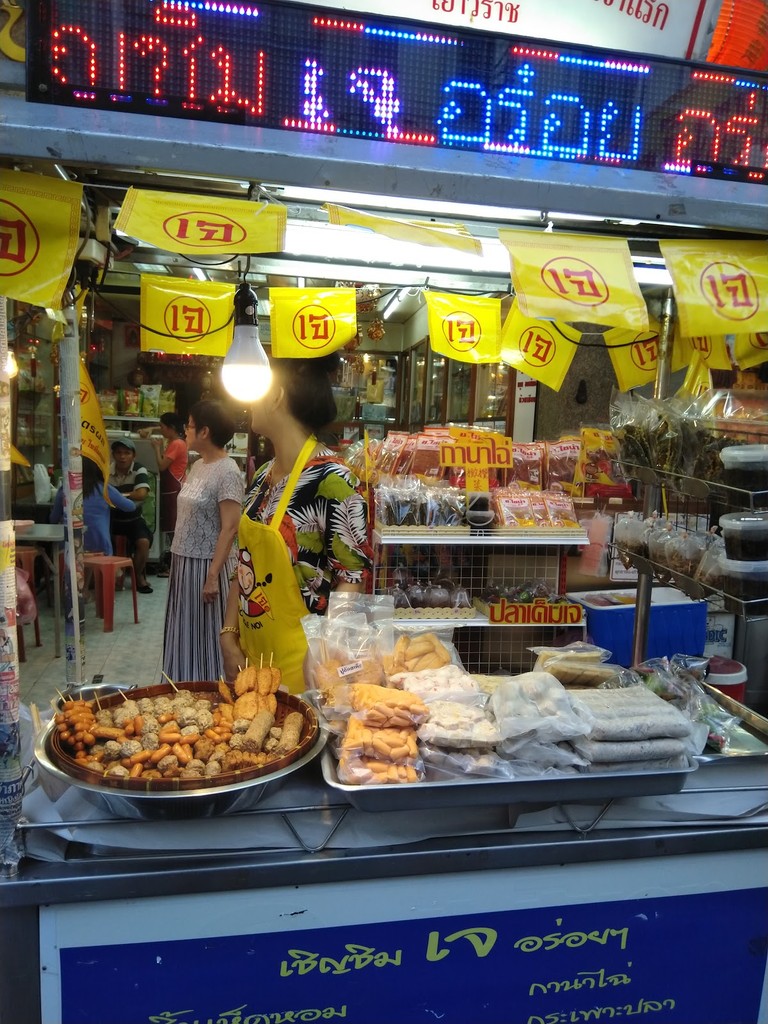
Yaowarat Road Street Food (Source: Google Maps)
Wat Mangkon Kamalawat (Wat Leng Noei Yi)
This is the largest and most important Chinese Buddhist temple in Bangkok, showcasing beautiful architecture and vibrant cultural practices.
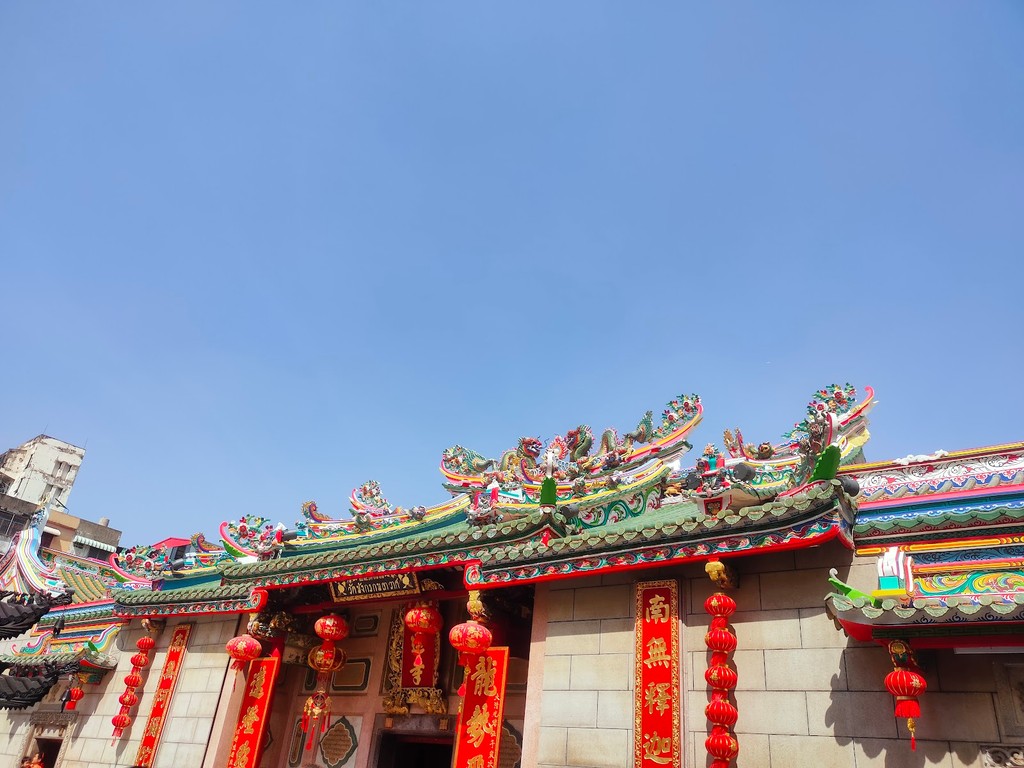
Wat Mangkon Kamalawat (Wat Leng Noei Yi) (Source: Google Maps)
Wat Mangkon Kamalawat, also known as Wat Leng Noei Yi, is the largest and most important Chinese Buddhist temple in Bangkok. Established in the early 20th century, it showcases stunning Chinese architectural elements, including intricate carvings and vibrant colors that reflect traditional Chinese designs. The temple is a center for the Chinese community in Bangkok, hosting various cultural and religious celebrations throughout the year. Inside, visitors can find beautiful altars, statues, and offerings that highlight the spiritual practices of Buddhism intertwined with Chinese traditions. The temple serves as a place of worship, community gathering, and cultural exchange, making it a vital landmark in Chinatown that embodies the rich tapestry of Thai-Chinese heritage.
Wat Chakrawat Ratchawat Woramahawihan (Crocodile Temple)
Visit this unique temple, known for housing live crocodiles, adding an unusual twist to the traditional temple experience.
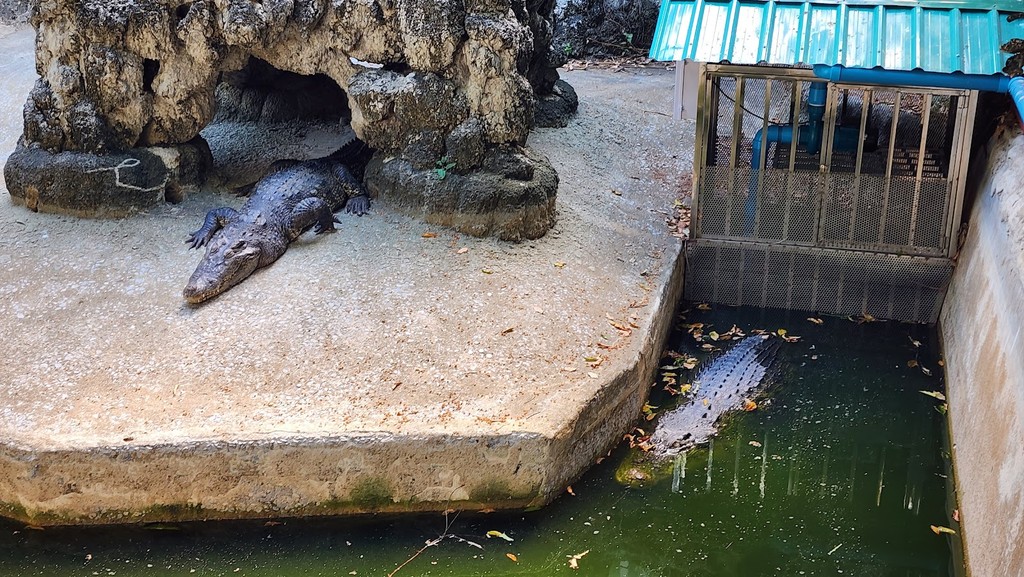
Wat Chakrawat Ratchawat Woramahawihan (Crocodile Temple) (Source: Google Maps)
Wat Chakrawat Ratchawat, commonly known as the Crocodile Temple, is a unique and intriguing landmark that features live crocodiles in its temple grounds. This unusual aspect draws curious visitors who are eager to learn about the temple's history and significance. The temple dates back to the 19th century and showcases traditional Thai architecture with beautiful murals and serene Buddha statues. The crocodiles are believed to be part of a local legend, symbolizing protection and safety. The temple serves as a place of worship and a cultural site, where visitors can observe the coexistence of religious practices and local folklore. The experience of seeing live crocodiles in a temple setting adds an extraordinary twist to the traditional temple visit, making it a memorable stop in Chinatown.
Sampeng Lane Market
Explore this bustling market filled with a variety of goods, from textiles to trinkets, offering a glimpse into the local shopping culture.

Sampeng Lane Market (Source: Google Maps)
Sampeng Lane Market is a bustling and vibrant marketplace that offers a unique glimpse into the local shopping culture of Bangkok's Chinatown. Known for its narrow alleys filled with an array of goods, from textiles to trinkets, the market is a paradise for shoppers and explorers alike. Established over a century ago, it has become a hub for both locals and tourists seeking authentic Thai products and souvenirs. The market is characterized by its lively atmosphere, where the sounds of haggling vendors and the aroma of street food fill the air. Visitors can find everything from traditional Thai clothing to handmade crafts, making it a great place to experience the rich cultural diversity of the area. Sampeng Lane is not just a shopping destination; it embodies the spirit of community and commerce that has thrived in Chinatown for generations.
Phahurat Market (Little India)
End your tour at this vibrant market, where you can explore a mix of Thai and Indian cultures, offering an array of fabrics and spices.
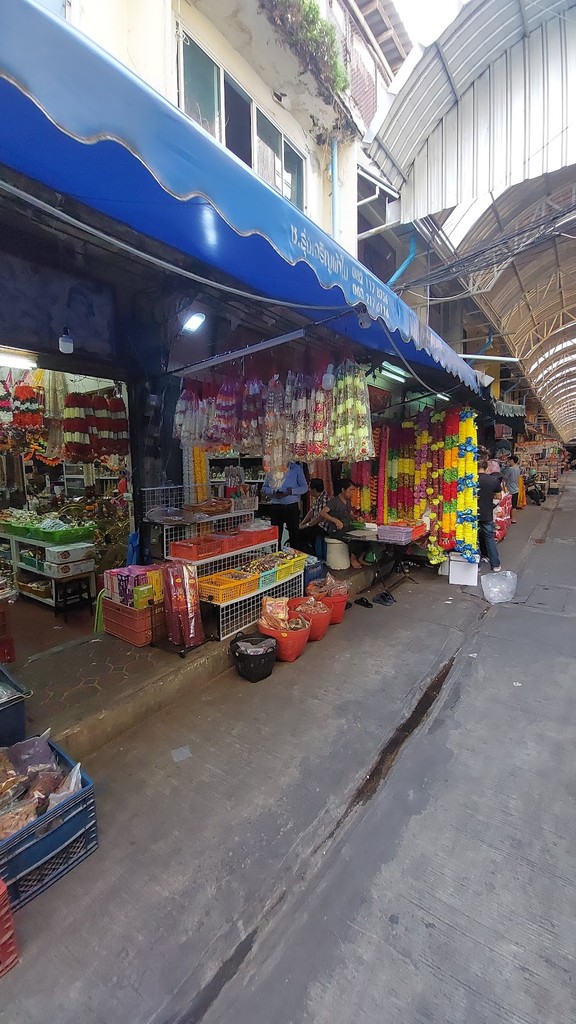
Phahurat Market (Little India) (Source: Google Maps)
Phahurat Market, often referred to as Little India, is a vibrant marketplace that showcases the rich cultural blend of Thai and Indian communities in Bangkok. The market is filled with colorful fabrics, aromatic spices, and traditional Indian sweets, offering visitors a sensory feast. Established in the early 20th century, it has become a focal point for the Indian diaspora in Thailand, celebrating their heritage through various cultural festivals and events. The architecture of the market reflects a fusion of Indian and Thai styles, creating a unique atmosphere that attracts both locals and tourists. Visitors can indulge in delicious street food, shop for intricate textiles, and explore the diverse offerings that represent the harmonious coexistence of two rich cultures. Phahurat Market is not just a shopping experience; it is a celebration of the vibrant multicultural tapestry that defines Bangkok.

Your travels, your rules.
Create your own Free Walking Tours.
Set your preferences, distances and anything you want to do or see.
Completely free, no payment required.